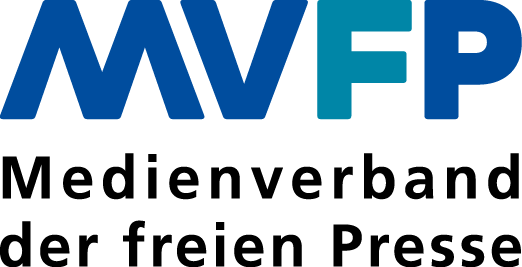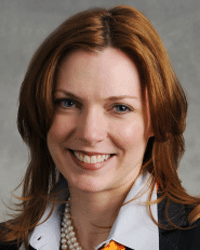Paid Content: "One size does not fit all" - Q&A with Kelly Leach, CEO of Piano Media
Kelly Leach brings extensive experience with paid digital content to her new job as CEO of Piano Media with Press+, having worked in a variety of strategic functions with Dow Jones and the Wall Street Journal since 2003. In our interview she discusses the reasons Piano acquired Press+ and the development of paid content since she helped grow paid digital subscriptions at the Wall Street Journal. She also provides insights into and recommendations for paid content for publishers. Kelly will speak in more depth about paid content at the Digital Innovators’ Summit (DIS) in Berlin from 21-24 March 2015.
The combination of Piano Media and Press+ was big news in the publishing world. What advantages and synergies do you see the combined company having versus the two companies separately?
Each company had some really good things going for it and the combination of them makes the one company going forward really very strong. For instance the meter that Press+ developed was a very robust, enterprise solution that fit the needs of most publishers in the US quickly and effectively. Likewise Piano had developed a solution that was very responsive to the needs of publishers in Europe. We are now able to take the best of both of these solutions and integrate them into one product that we will put on the market shortly, enabling us to offer the most comprehensive and integrated solution available.
Aside from the tech aspect of the acquisition, the company now has extensive data regarding user behavior with respect to paid content across two continents and we are able to share best practices with our existing clients and potential clients. We can show European publishers what is working for American publishers and vice versa; this is an edge that no other company can come close to matching. We are in the process of using this data to help our current clients gain a more thorough understanding of how consumers are reacting to paid content and then helping them navigate those behaviors to their benefit.
Having helped the Wall Street Journal grow its paid digital subscriptions long before other publishers started to charge for digital content, what changes have you seen in the approach to paid content from then until now?
At the Wall Street Journal we had an audience who we knew really well, one that we were sure we could monetize effectively and that proved to be the case. The CEO at the time, Peter Kahn, made the decision that the Journal’s content was simply too valuable to give away for free, a decision that has stood the test of time. In fact, when Rupert Murdoch bought the paper in 2007 his first inclination was to take the paywall down, but after a discussion with the management and editorial teams, not only did he choose to keep the paywall in place, he implemented a similar system at his properties in the UK.
That said however, there are very few newspaper publishers that have the heft of the Journal and therefore the Journal’s freemium approach to monetizing of its content is different from other publishers. The meter approach, that is charging consumers that access beyond a limited number of free articles, has made the greatest inroads in the market. It is the most flexible, offering the user a chance to sample the product before he buys. And as the meter has gained greater acceptance among publishers and news consumers, the way it is being deployed has gained sophistication as well. No longer do most newspapers offer either digital or print, it’s usually a combination of both and with a slight subscription price increase for the combination.
What approaches do you see working best for paid content? Are there distinct differences between newspaper and magazine media when it comes to paid content?
There is not really a one-size-fits all solution to paid content. When publishers think about implementing a paid-content solution, it’s important for them to step back and give serious consideration to their market, their ad sale, print subscribers and then choose a solution that will balance the competing needs of their digital business while still converting the maximum number of readers into paying digital subscribers. The key is to really understand readers and their needs and apply a solution that will fit them.
As far as differences between the magazine and newspaper markets go, there are of course differences; it is a matter of analyzing each market carefully to maximize conversion. Newsweek magazine has adopted a new strategy since it re-launched in Jan. 2014, focusing on one big current event per issue and covering that comprehensively and making sure, through social media and subscriber marketing, that their users know what’s coming and what to expect. This is different from a daily newspaper that is serving the needs of a community and focuses exclusively on that.
What is the same though is to use paid content to increase user engagement and make the user feel vested in the medium to which he is or may want to subscribe.
What are ways for publishers to tie in print and other services with paid digital content?
We are starting to see publishers thinking of not just selling a subscription that involves access to content but instead selling a membership that includes a subscription to digital but also may include other benefits and ways to engage with the brand. That may take the form of access to exclusive events or discounted access to other products and services of interest to the subscriber and consistent with the brand and the brand experience with which the subscriber is engaging.
What do you see as the future of paid digital content?
We are still at a very early stage in the development of the paid digital content business. Publications have started to charge for access to their content, but in many ways the content and the way the site is configured is still oriented for some other purpose, be it content that is created for print or a site design that is optimized more for digital advertising. We are seeing a lot of experimentation now around packaging and pricing of the digital subscription offering. But publishers also now have information about what subjects and types of content on their site are valuable enough that it is most likely to cause a visitor to become a paid subscriber. We are starting to see publishers factor that information into decisions they are making about the content they invest in producing with an eye towards investing more in the distinct and valuable content for which their site audience will ultimately be willing to pay to access. Having that information factored into content investment decisions is a good thing for the consumer and is a good thing for the content producer.
Kelly will be one of the many speakers at the Digital Innovators’ Summit in Berlin from 23-24 March 2015. Register now to join Kelly and us in Berlin.
DIS Full Programme Overview
Here is an overview of the full DIS programme to give you a sense of the 4 days from 21 - 24 March 2015:
Saturday, 21 March 2015
- Start of Media Hack Day Hackathon*
Sunday, 22 March 2015
- Media Hack Day Hackathon presentations*
- Meet the Founder Berlin startup tour*
- Evening Reception for all Summit attendees
Monday, 23 March 2015
- Main Summit, conference programme plus:
- Media Hack Day hackathon and winner presentation
- DSX showcasing media related startups
- DIS Logoff: A fun evening of drinks and networking at a Berlin locale (no-host bar)
Tuesday, 24 March 2015
- Main Summit, conference programme plus workshops
- Meet the Founder Berlin startup tour*
See the Speaker Lineup
* Items not included in Main Summit registration. Meet the Founder requires separate registration.






